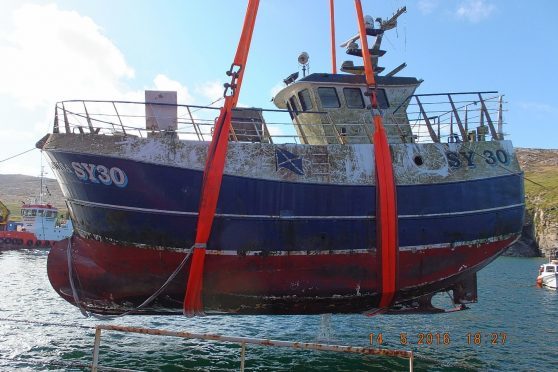An official report into the MV Louisa fishing boat tragedy has revealed a litany of disaster including apparently ineffective lifejackets, delays in the rescue operation and a switched-off alarm.
The Marine Accident Investigation Branch is now calling for “urgent” checks into the way lifejackets are tested after all three victims were found face down in the water.
Paul Alliston, Martin Johnstone and Chris Morrison died last year when the MV Louisa sank off Mingulay, near Barra. Their fellow crewman Lachlan Armstrong swam to safety.
And now, more than a year later, the MAIB is calling for more research to be carried out into lifejacket performance testing “as a matter of urgency”.
The MAIB report found that a flooding alarm had been disconnected and the liferaft didn’t inflate properly.
Steve Clinch, Chief Inspector of Marine Accidents, said: “After abandoning the vessel, the skipper and crew depended on their lifejackets for survival.
“A lifejacket should turn an unconscious person on to their back and keep their airway clear of the water. It is therefore of concern that the skipper and two crew were tragically found unresponsive and face down in their lifejackets when the rescue services arrived on scene.”
He said trials after the accident “strengthened that concern”, adding: “Therefore, as a matter of urgency, I am recommending the MCA to conduct further research to confirm or otherwise the suitability of historical and extant lifejacket water performance test protocols.”
The report also said that, by the time the first unresponsive casualties were found, they had been in the water for approximately one hour and 52 minutes. It stated it was possible that more of the crew would have survived had their lifejackets been more effective in keeping their mouths clear of the water and that rescue services had arrived sooner.
The first alert from the stricken Louisa was received at 2.32am, but communication problems caused delays and the Barra lifeboat didn’t arrive at the scene until 4.13am.
Mr Alliston’s brother Andy McMillan said that the crew were “let down” by organisations they relied on for their rescue.
A spokeswoman for the MCA said the agency was “continuing to collaborate” with the MAIB to address the recommendations.
She added: “The International Maritime Organization, IMO, has general requirements for lifejackets, and their testing. The MCA, working alongside international partners is investigating concerns that the IMO general requirements and testing standards for lifejackets may benefit from an amendment to enhance the real-life performance.”
The spokeswoman added that lifejackets are still “the principal life-saving appliance” to improve chances of survival if someone does go into the water.
‘Safety must be priority’
Following the publication of the Marine Accident Investigation Branch report, the owners of the Louisa, Duncan and Murdo Kennedy, said in a statement that their thoughts remained with the family of “three fine fisherman” and Lachlan Armstrong himself.
The statement continued: “We have fully cooperated with the MAIB inquiry and are committed to implementing the report’s recommendations.
“We hope the wider issues raised in the report will lead to improved safety for all those working at sea and prevent any similar incident from happening.”
The convenor of Western Isles Council, Comhairle nan Eilean Siar, Norman A. Macdonald, added: “It is vital that rigorous checks are carried out on safety equipment regularly and everything is kept up-to-date.”
